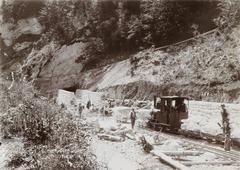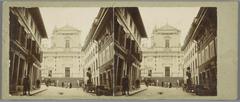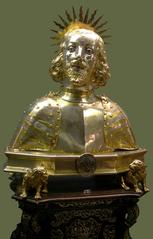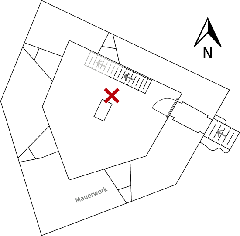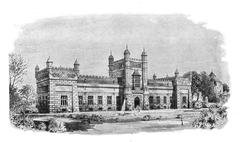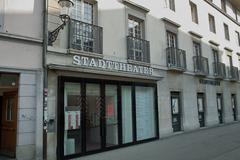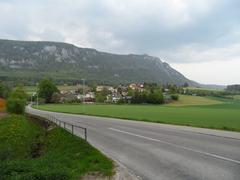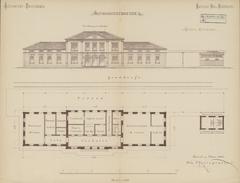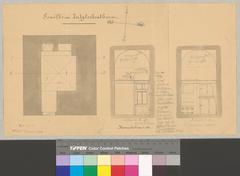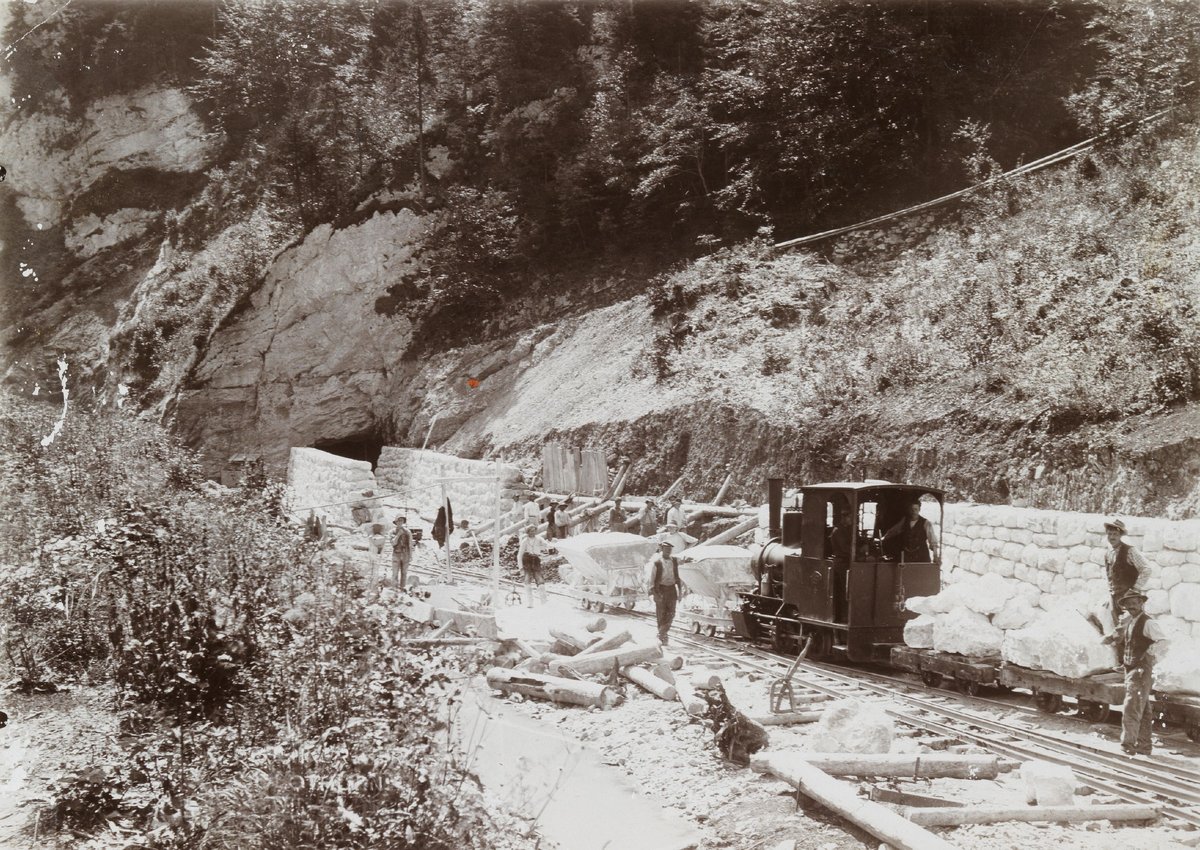
St. Ursus Cathedral: Visiting Hours, Tickets, and Historical Significance in Solothurn
Date: 15/06/2025
Introduction
St. Ursus Cathedral (St. Ursenkathedrale) rises majestically in the heart of Solothurn’s old town, standing as both a spiritual center and an architectural masterpiece. Renowned as one of Switzerland’s finest Baroque and early Neoclassical landmarks, the cathedral is not only a place of worship and pilgrimage but also a key site in the region’s religious and civic history. From its ancient foundations to its iconic limestone façade and rich artistic heritage, St. Ursus Cathedral offers visitors a unique blend of history, culture, and inspiration. This guide provides detailed information on visiting hours, tickets, accessibility, guided tours, nearby attractions, and useful travel tips, ensuring a rewarding and well-informed experience.
For further details and the latest updates, consult official tourism and historical resources (de.wikipedia.org, solothurn-city.ch, touringswitzerland.com).
Table of Contents
- History and Heritage
- Religious and Cultural Significance
- Architectural Highlights
- Visiting Information
- Accessibility and Facilities
- Guided Tours and Audio Guides
- Nearby Attractions and Suggested Itineraries
- Visitor Tips and Etiquette
- Frequently Asked Questions (FAQ)
- Conclusion
- References
History and Heritage
Early Origins and Medieval Foundations
The site of St. Ursus Cathedral has been a place of Christian worship since at least the 9th century. Historical records from 870 reference the “Monasterium Sancti Ursi in Soloduro” as a significant religious institution (de.wikipedia.org). Legend holds that Queen Bertha, inspired by the discovery of Theban martyrs’ graves, initiated the construction of a church in the 10th century. Archaeological evidence suggests the crypt dates from the 11th century, marking it as one of the oldest surviving parts of the cathedral.
Through the centuries, the church evolved architecturally and in status, becoming the collegiate church of the St. Ursus chapter and later, in 1828, the cathedral of the Roman Catholic Diocese of Basel (de.wikipedia.org).
Architectural Evolution
The current building, constructed between 1762 and 1773, reflects the transition from Baroque exuberance to early Neoclassicism. Master architect Gaetano Matteo Pisoni and his nephew Paolo Antonio Pisoni designed the cathedral, using local Solothurn Jura limestone to create a luminous and imposing structure (swissimages.com). The grand staircase, iconic façade, and onion-domed tower define the exterior, while the interior boasts elegant stucco work and a Latin cross layout.
The cathedral has endured and recovered from significant events, such as the earthquake of 1853 and the arson attack of 2011, demonstrating a legacy of resilience and ongoing preservation (de.wikipedia.org).
Religious and Cultural Significance
Patron Saints and Relics
Dedicated to Saints Ursus and Victor, legendary martyrs of the Theban Legion, the cathedral is a focal point for local and regional pilgrimage. Their relics are housed in the crypt, and their stories have shaped Solothurn’s Christian identity since the 5th century (Wikipedia, Touring Switzerland).
The Symbolism of Eleven
Solothurn’s “magic number” is eleven, a motif woven throughout the cathedral and city. Notable examples include:
- Three sets of 11 steps on the grand staircase
- 11 altars and 11 confessionals
- 11 bells in the tower, which is 66 meters tall (6x11)
- 11 churches and chapels within the old town
The number also appears in city traditions, such as the 11-hour clock and local festivals (Solothurn City, lostinswitzerland.com).
Role in the Diocese and Community
As the seat of the Diocese of Basel, St. Ursus Cathedral hosts major liturgies, ordinations, and sacraments in both German and French (Explorial). The cathedral is central to community life, with annual festivals, concerts, and processions tied to the city’s heritage (Touring Switzerland).
Architectural Highlights
Exterior and Façade
The cathedral’s white limestone façade, with its Corinthian columns, triangular pediment, and statues of Saints Ursus and Victor, stands out above Solothurn’s old town and the River Aare (solothurn-city.ch). The grand staircase of 33 steps (3x11) and the 66-meter bell tower reinforce the city’s symbolic numerology.
Interior Features
- Nave and Altars: The luminous nave features white marble, gilded ornamentation, and 11 altars adorned with religious iconography.
- Black Stones: Embedded in the nave’s floor, the 11th black stone is a unique vantage point from which all 11 altars are visible (lostinswitzerland.com).
- Stained Glass and Light: The cathedral boasts 18th- and 19th-century stained glass windows, creating a serene, light-filled atmosphere.
Bell Tower and Views
The bell tower, accessible for a small fee, offers sweeping vistas of Solothurn, the Jura mountains, and, on clear days, the Bernese Alps (lostinswitzerland.com). The climb involves 249 steps and is open from April to October.
Treasury and Artworks
The cathedral’s treasury houses liturgical objects and rare manuscripts, including the Hornbach Sacramentary and revered Marian statues (solothurn-city.ch).
Visiting Information
Opening Hours
- General Hours: Monday to Saturday, 9:00 AM – 5:00 PM; Sunday, 12:00 PM – 5:00 PM
- Bell Tower: Accessible April–October for a fee (check weather conditions and capacity limits)
- Special Services: Hours may vary during religious festivals and events. Always check the official parish website or Solothurn tourism site for updates.
Tickets and Fees
- Cathedral Entry: Free of charge
- Bell Tower Access: CHF 3 per person
- Guided Tours: Starting at CHF 120 per group (up to 25 people); audio guides available for CHF 5
Booking Tours
- Guided Tours: Offered in German, French, and English; book via Solothurn Tourism or on-site
- Audio Guides: Rent at the entrance or through the official audio guide portal
Accessibility and Facilities
- Mobility: Wheelchair-accessible entrance ramp and elevator to the crypt; some upper galleries and the bell tower are not accessible due to stairs.
- Restrooms: Available near the main entrance
- Gift Shop: Sells religious items, postcards, and guidebooks
- Wi-Fi: Free in the nave
- Family-Friendly: Activity booklets for children; educational tours for schools
Guided Tours and Audio Guides
Guided tours delve into the cathedral’s architecture, history, and symbolism. Audio guides offer self-paced exploration in several languages. Booking in advance is recommended during peak months (May–September).
Nearby Attractions and Suggested Itineraries
Combine your visit with other highlights in Solothurn’s old town:
- Jesuit Church: Notable for its ornate Baroque interior
- Zeitglockenturm (Clock Tower): Historic city clock and observation point
- Museum Altes Zeughaus: Swiss military history
- Aare River Promenade: Ideal for scenic walks
All are within a 5–10 minute walk from the cathedral (Solothurn Attractions).
Visitor Tips and Etiquette
- Dress Code: Cover shoulders and knees; hats off inside
- Photography: Allowed in most areas except during services and in the crypt; no flash or tripods
- Quiet Respect: Maintain silence during services and in the crypt
- Best Times: Early morning or late afternoon for fewer crowds; weekdays outside festivals
Frequently Asked Questions (FAQ)
Q: What are the cathedral’s visiting hours?
A: Monday–Saturday, 9:00 AM–5:00 PM; Sunday, 12:00 PM–5:00 PM. Check for holiday and event variations (official parish website).
Q: Is there an entry fee?
A: No, entry to the main nave and chapels is free; small fee for bell tower access.
Q: Are guided tours available in English?
A: Yes, book in advance via Solothurn Tourism.
Q: Is the cathedral accessible for visitors with limited mobility?
A: Main areas and crypt are accessible; bell tower is not.
Q: Can I take photographs inside?
A: Yes, except during services and in the crypt; no flash or tripods.
Q: What are some nearby historical sites?
A: Jesuit Church, Zeitglockenturm, and Museum Altes Zeughaus.
Conclusion
St. Ursus Cathedral is a cornerstone of Solothurn’s spiritual, cultural, and architectural heritage. Its unique blend of Baroque artistry, rich symbolism, and deep-rooted traditions offers visitors a captivating journey through Swiss history. Whether you are drawn by its religious significance, its artistic treasures, or simply its beauty, St. Ursus Cathedral stands ready to inspire and welcome all who enter its doors.
Plan your visit using digital tools like the Audiala app for guided tours and the latest event updates. For a full experience, explore the old town’s other historical gems and enjoy the city’s vibrant cultural life.
References
- St. Ursenkathedrale – de.wikipedia.org
- St. Ursus Cathedral – Solothurn City
- St. Ursus Cathedral – Touring Switzerland
- St. Ursus Cathedral – Lost in Switzerland
- History of Solothurn – Solothurn City
- Solothurn Tourism
- St. Ursenkathedrale Parish Official Website
- Metzler Orgelbau
- Solothurn Classics
- Solothurn Sustainability
